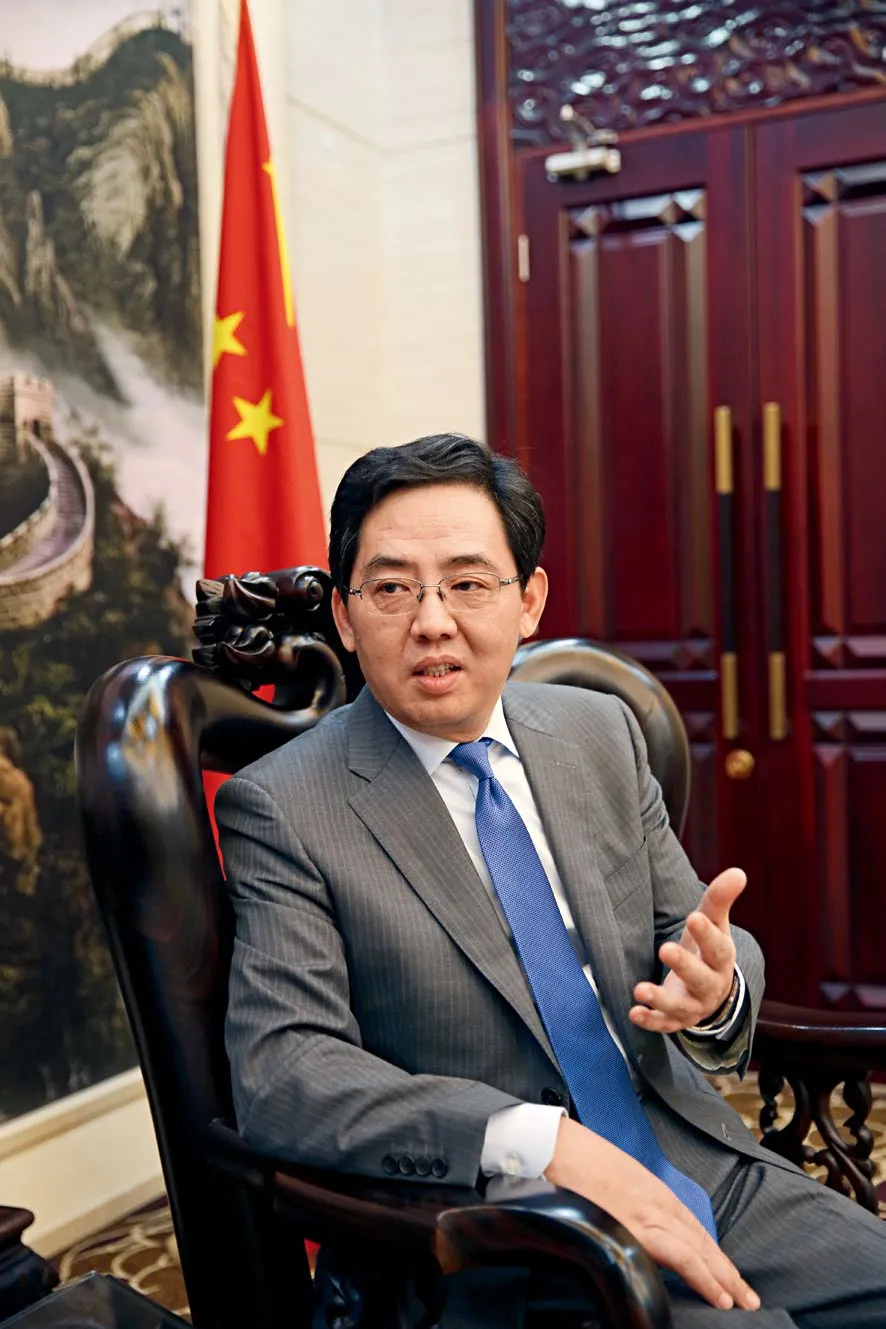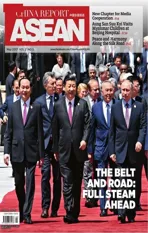China and Vietnam See Fresh Space for Cooperation
2017-07-18By
By
China and Vietnam See Fresh Space for Cooperation
ByZhang Hui
Exclusive Interview with Chinese Ambassador to Vietnam Hong Xiaoyong
So far in the year 2017, Sino-Vietnamese economic and trade cooperation has developed well, and bilateral trade has become increasingly balanced. Top-level leaders from both China and Vietnam have reached consensus on linking China’s Belt and Road Initiative with Vietnam’s“Two Corridors and One Economic Circle” plan, thus creating enormous cooperation potential. On the eve of the convening of the Belt and Road Forum for International Cooperation, China Report ASEAN conducted an exclusive interview with Chinese Ambassador to Vietnam Hong Xiaoyong to discuss economic and trade relations, cultural and people-to-people exchanges and overall cooperation prospects for China and Vietnam.
>> China Report ASEAN: What is the development trend of Sino-Vietnamese economic and trade exchanges?
Hong Xiaoyong:Economic and trade cooperation is an integral part of the bilateral relations that exist between China and Vietnam. Sino-Vietnamese trade has long been in a leading position in Vietnam’s foreign trade. China has remained Vietnam’s largest trade partner for 13 years in a row. In 2016, Vietnam surpassed Malaysia to become China’s largest trade partner in the ASEAN region. Vietnam’s exports to China increased by 40 percent in the first quarter of 2017. Thus, the bilateral trade structure as a whole is becoming more balanced.
Investment is another important aspect of Sino-Vietnamese economic and trade cooperation. China long held a ranking of ninth or 10th among all foreign investors in Vietnam. As bilateral relations further developed, 2016 saw an impressive increase in China’s investment in Vietnam, leading to a rise in rank to eighth. This momentum continued in the first quarter of this year, bringing China into the top three in terms of investment increment among 38 countries and regions that have invested in Vietnam. As an important link to enhance bilateral relations between China and Vietnam, economic and trade cooperation has played a significant role in promoting pragmatic cooperation between the two countries.
>> China Report ASEAN: Since China first proposed the Belt and Road Initiative, how have China and Vietnam synergized their development strategies? What are the highlights of bilateral cooperation?
Hong Xiaoyong:Since the Belt and Road Initiative was put forward in 2013, it has received a wide range of responses from the international community, so inevitably it has attracted Vietnam’s attention. In November 2015, Chinese President Xi Jinping paid a state visit to Vietnam, and early this year, General Secretary of the Central Committee of the Communist Party of Vietnam Nguyen Phu Trong visited China. During these top-level meetings the two countries confirmed they would align the Belt and Road Initiative with Vietnam’s “Two Corridors and One Economic Circle” plan. The relevant departments are now negotiating documents specific to the alignment. The two countrieshave also signed a memorandum on production capacity cooperation. This highlights the clear intentions of the two governments to cooperate. As for specific cooperation projects, major headway and impressive achievements have been made.

Chinese Ambassador to Vietnam Hong Xiaoyong.
With regards to transportation infrastructure, China Railway Engineering Corporation’s Sixth Bureau is constructing Vietnam’s first urban light rail. China has provided concessional loans and preferential buyer’s credit construction, while also bringing in technology, capital, equipment and standards.
In terms of electricity generation, Vietnam used to purchase electricity from China, but instead now works with China to build its own power plants. A representative project is the Vinh Tan 1 Power Plant, constructed by the China Southern Power Grid, including investment of US$1.8 billion. Upon completion, this project will considerably alleviate electricity shortages in the area.
In the manufacturing sector, more and more Chinese private companies have chosen Vietnam as their investment destination. The Texhong Textile Group, which set up a factory in Bac Ninh Province, is prospering, and has localized effectively. While making a significant contribution to the province’s economy, Texhong Textile has also created more than 7,000 jobs for local residents.
Construction of industrial parks has also been vital. The Long Jiang Industrial Park in South Vietnam’s Tien Giang Province, which has mainly received investment from Chinese private companies, has reached initial completion. Covering 54 hectares, it's so far home to around 36 companies. In addition, construction of the China-Vietnam (Shenzhen-Haiphong) Economic and Trade Zone in Haiphong city in north Vietnam is now in progress. Upon completion, it will achieve an estimated annual output value worth more than US$1 billion.

The third Chinese-Vietnamese Youth Gettogether was held in Vietnam on Nov. 7, 2016.
>> China Report ASEAN: Currently, more and more Chinese people are interested in learning Vietnamese. It is understood that in Yunnan Province alone, there are 11 universities and colleges offering a Vietnamese language major to students. These institutions have also organized Vietnamese speaking contests a number of times. In terms of language and other areas, how are cultural and people-to-people exchanges between China and Vietnam progressing?
Hong Xiaoyong:The Chinese and Vietnamese cultures are inextricably linked thanks to Confucianism, which has historically wielded indelible influence on both. Vietnamese traditional festivals also closely correlate with Chinese ones. For example, the Spring Festival is the most important holiday in both countries. Our peoples thus feel an affinity to each other’s cultures. Both the Chinese and Vietnamese governments have always attached great importance to bilateral cultural exchanges, and approved the setting-up of cultural centers in each other’s territories, thus laying a foundation for better exchanges in the future.
>> China Report ASEAN: What do you think of the role of China-Vietnam cooperation under the framework of the Belt and Road Initiative in promoting China’s relationship with ASEAN?
Hong Xiaoyong:China’s relationship with ASEAN is an important part of its neighborhood diplomacy. ASEAN is also an important partner for China’s international cooperation along the 21st-Century Maritime Silk Road. Vietnam is located in Southeast Asia, bordering China. Therefore, China’s cooperation with Vietnam under the Belt and Road Initiative framework will be conducive to building consensus on the Initiative among ASEAN member states and expanding cooperation with them. Vietnam’s economy is on the fast track, and its position in ASEAN will inevitably continue to rise.
Moreover, the alignment between Vietnam’s “Two Corridors and One Economic Circle” plan and China’s Belt and Road Initiative will set a perfect example for other ASEAN countries. As the only country in ASEAN with both land and sea borders with China, Vietnam acts as a bridge connecting China and ASEAN.
